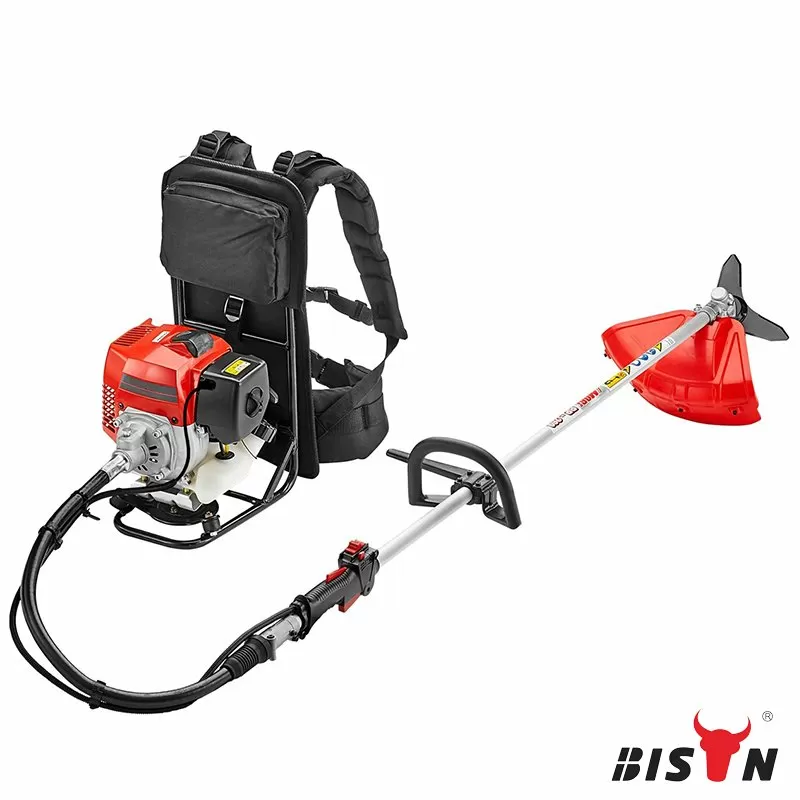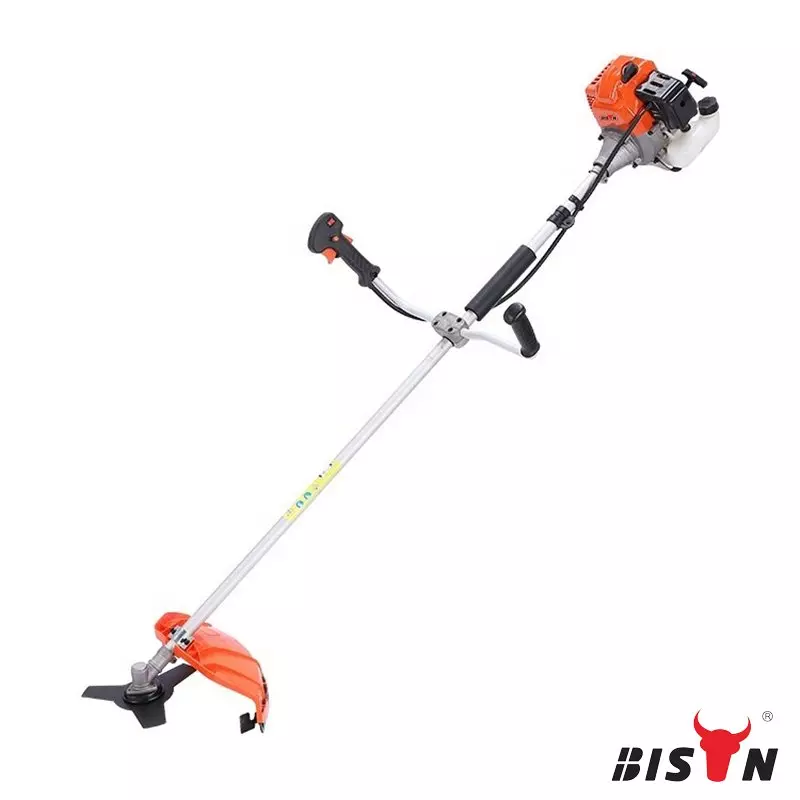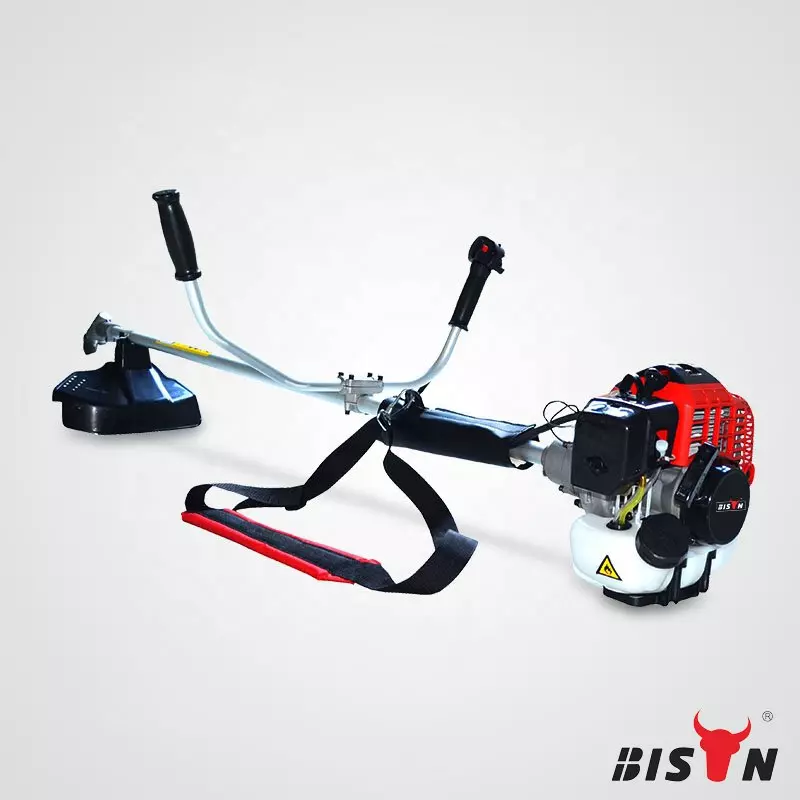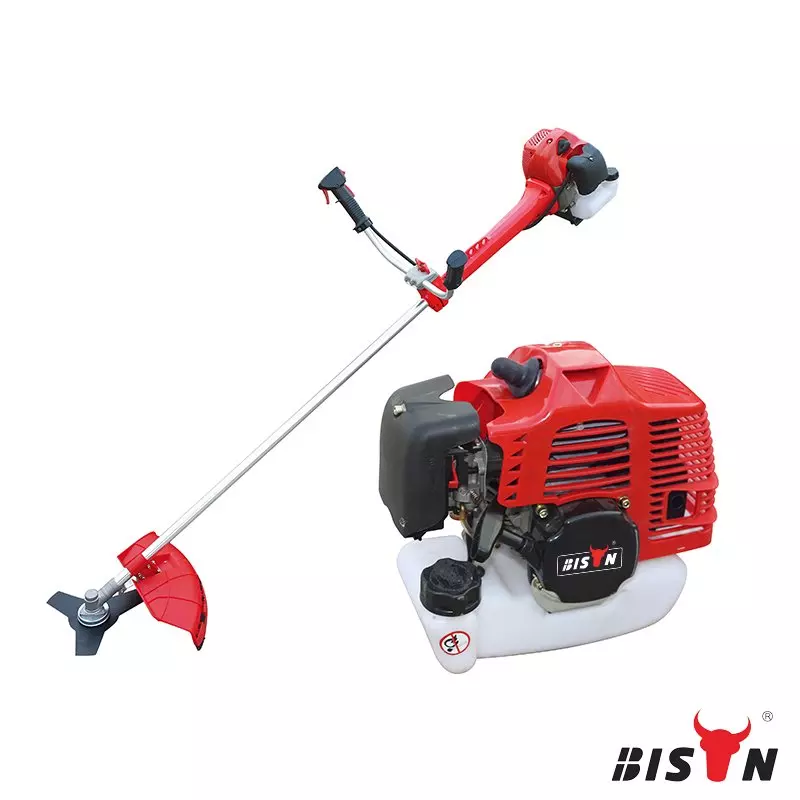brush cutter blades - types, choices, maintenance...
2023-10-20
Table of content
A brush cutter is a valuable tool every maintenance shed should have. Not only are they relatively easy to use, but they help clear tougher brush and small trees. This is something ordinary lawnmowers cannot do.
While they’re handy in lush areas, deciding which blade is the right cutting tool can sometimes be hard. How many types of blades are there, and what’s the difference between them? What are the pros and cons of each blade type? Ask yourself these questions before you start looking for the best brush cutter blades.

What are brush cutter blades?
Brush cutter blades are an essential tool in any gardener's arsenal. They are specialized, high-quality steel tools designed to be attached to brush cutters. Each blade type has unique features that make it suitable for a particular task.
Different types of brush cutter blades
chisel blade
Chisel blades are known for their sharp edges and robust design. These blades are round and have teeth around the edges. These teeth are sharp and can easily cut through any vegetation. If you want to use this blade, you will need a sturdy tool, which will give better results if the blade is turned fast enough.
Advantages
Sharp, hardened steel construction, multiple cutting edges
High durability
Excellent performance when cutting
Disadvantages
Quite expensive
Requires a lot of electricity to run
Requires frequent sharpening
It is almost impossible to sharpen the blade
Cutting performance
A chisel blade is ideal for horizontal cuts within the depth limit. Cutting too deep can cause the blade to slow down considerably. This usually happens when cutting branches with a more than 50 – 60 mm diameter. They are excellent for cutting through thick, woody vegetation and trees.
Knife blades
Knife blades are versatile and ideal for cutting grass and light brush. It is the most common metal blade and is usually included with purchasing a standard brush cutter. They come in various designs, including 3-tooth, 4-tooth, and 8-tooth variants.
Advantages
Affordable
lightweight design
Cuts soft vegetation well
Usually durable if cared for properly
Disadvantages
It cannot be used on hard surfaces
Dulls quickly
It easily breaks if hit against a hard rock
Cutting performance
As the edges dull quickly, the blades begin to crush any vegetation. When that happens, it becomes a smashing blade. This can also cause uncut vegetation to spring back under the blade.
Tough as these blades may be, if a proper cutting technique is not used, the blade tip will snap if it becomes dull.
Mulching ability
The best blade types for mulching are rectangular and star-edged. The large blade surface area is the reason for this. Round multi-pointed blades are not valuable for mulching. Don’t even waste time trying to mulch with this blade.
Mulching Blade
Mulching blades, also known as 3-in-1 blades. These blades are more curved and have two cutting blades on the edge. Mulching blades are designed to cut and recut grass clippings into fine pieces, which are then returned to the lawn as a natural fertilizer. This mulch will make your earthworms very happy.
Advantages
Curved design, multiple cutting surfaces
provides natural fertilization
Mulch leaves and smaller branches with ease
For heavy workpieces
Disadvantages
Requires a lot of electricity to run
Only suitable for larger brush cutters in most cases
Tall grass and woody weeds are not this blade’s strong suit
Debris may fly around under force
Mulching ability
These blades’ curvature and longer cutting edges allow them to carry cut grass into the deck. They are unsuitable for overgrown areas but do well on well-maintained lawns. Unlike regular blades, these blades can cut grass into tiny pieces.
Factors to consider when choosing a brush cutter blade
Considering Blade Material
Steel: This is the most common material used in brush cutter blades because of its durability and ease of sharpening. However, it can rust if not properly maintained.
Carbide: Carbide blades are harder and more durable than steel, making them suitable for cutting through tough vegetation. They remain sharp for longer but are more difficult to sharpen once they become dull. Carbide tips are mainly made of tungsten carbide (WC) and cobalt (Co). However, cheap products contain iron (Fe), which is very brittle and breaks easily.
tungsten carbide-tipped blade: The blade has a tungsten carbide tip brazed to the metal body. This tungsten carbide tip has a sharp edge second only to diamond and offers exceptional durability.
Stainless steel: These blades are resistant to rust, making them perfect for use in damp environments. However, they may not be as durable as steel or carbide blades.

Blade Shapes
Different blade shapes influence the cutting ability and usability of the tool. For instance, circular blades are versatile and can handle both light and heavy-duty tasks. Triangular or star-shaped blades, on the other hand, offer more precision and are perfect for tasks like pruning or trimming.
Evaluate teeth
The length, width and spacing of the teeth also affect the performance of the blade. Wider and longer teeth are generally more aggressive and better suited for heavy-duty duty. On the other hand, smaller, closely spaced teeth provide greater precision and are ideal for light tasks like trimming.
There are also some different tooth types, such as one-piece blades, which have the teeth and blade in one piece. The chain saw chain is mounted between two separate discs in the chain saw blade. Like a tungsten carbide blade, its teeth are brazed to the disc.

Maintaining brush cutter blades
Maintaining your brushcutter blades is essential for optimal performance and longevity. Regular cleaning, lubrication and dry storage can extend the life of your blades. Address dulling issues with regular sharpening, prevent rust with oil, and avoid clogging with thorough cleaning. Secure the blade before sharpening it with a flat file, and always file in one direction. Smaller dents can be filed away, while larger dents will require professional sanding. By following these steps, you'll keep your blades sharp, efficient, and ready for any task.
Conclusion
Hopefully, this blade guide has given you more insight into your cutting options. Remember that brush cutter blades are an essential components, and understanding their types, choices, maintenance etc. can significantly enhance your product's competitiveness.

As a professional brush cutter manufacturer in China, BISON offers a variety of high-quality, durable brush cutter blades designed to enhance your lawn mower business. Our blades are precision engineered and made from sturdy materials to guarantee superior performance and longer life. Whether your customers are using it for tree trimming or brush cutting, BISON has it covered. Explore our range of brush cuttrt today, or contact us for brushcutter blade information.




